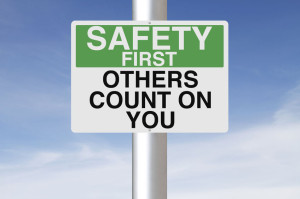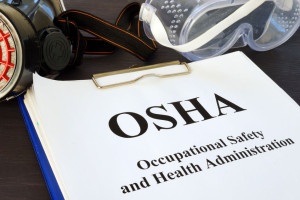Your business, like many, likely offers employees certain benefits to employees like 401(k) plans, health insurance, and disability insurance. While these are important factors in your employees staying on with your company or new employees accepting offers of employment, it adds an additional layer of financial responsibility and compliance for your business. The Employee Retirement Income Security Act (ERISA) states that anyone who is overseeing employee benefits can be held liable for mismanagement of these benefits.
your company or new employees accepting offers of employment, it adds an additional layer of financial responsibility and compliance for your business. The Employee Retirement Income Security Act (ERISA) states that anyone who is overseeing employee benefits can be held liable for mismanagement of these benefits.
The best way to protect yourself and your business from the potential compliance errors is through fiduciary liability, as this kind of policy covers any associated legal costs to defend against claims of errors and a breach of fiduciary duty. If you’ve never heard of this kind of liability insurance, you’re not alone. ERISA doesn’t require it, but it’s a good idea for your business to consider this type of coverage to ensure that your business isn’t at increased risk.
Here’s what to know about financial liability policies: Fiduciary liability protects you and any of your employees — such as HR staff — who are involved in the administration of your 401(k), health and disability plans. If your staff or business are found in breach of their fiduciary duty in managing these benefits, personal assets including car, home, and bank accounts, etc. can be at risk.
According to a Tillinghast survey, mounting a defense in the event of financial mismanagement can cost a business an average of $365K and with a settlement average of $994K. The Department of Labor holds the individual company responsible for the vetting and monitoring outside benefits vendors, so the liability for error rests with the business.
While ERISA doesn’t require financial liability insurance, it does require an ERISA Bond. What’s the difference? An ERISA Bond protects the benefit plan participants from loss due to fraud or dishonesty. This protects the employees who have money invested in a 401(k), for instance, from losing assets due to fraud and theft. Fiduciary liability is insurance that offers defense coverage and protection for the fiduciaries from lawsuits. In the event of mismanagement, you could be sued by:
- Plan participants
- Participants’ legal estates
- Plan beneficiaries
- Internal Revenue Service
- Department of Labor
- Securities and Exchange Commissions and
- State Attorney General
Fiduciary liability could be a critical piece of coverage for your business. To get a quote or find out more about this important type of policy, get in touch with our office today.

 The workplace can be dangerous. From hazardous chemicals to heavy objects and dizzying heights, there are numerous safety challenges to overcome to keep all employees healthy and secure. Despite our efforts though, one of the most common workplace injuries continues to linger right under our noses — or, in this case, our ears.
The workplace can be dangerous. From hazardous chemicals to heavy objects and dizzying heights, there are numerous safety challenges to overcome to keep all employees healthy and secure. Despite our efforts though, one of the most common workplace injuries continues to linger right under our noses — or, in this case, our ears. Your business is a big part of your life — that’s why you’ve decided to protect your assets with business insurance. But if there’s an incident, accident, or issue, do you know how to use your insurance coverage to your advantage? Here are some things to keep in mind in case you face an event like:
Your business is a big part of your life — that’s why you’ve decided to protect your assets with business insurance. But if there’s an incident, accident, or issue, do you know how to use your insurance coverage to your advantage? Here are some things to keep in mind in case you face an event like: It’s no secret that a lot of us who have office jobs could use a little more exercise. Sitting for long periods each day can cause health issues over time, and put strain on your back and neck. The answer? You just might want to try to fit a workout into your schedule at work!
It’s no secret that a lot of us who have office jobs could use a little more exercise. Sitting for long periods each day can cause health issues over time, and put strain on your back and neck. The answer? You just might want to try to fit a workout into your schedule at work! The most common workplace safety concerns aren’t usually the most obvious. For the most part, that’s a good thing — if chemical leaks, explosions and crane collapses happened more frequently, we’d never get anything done. Still, just because a hazard is small or seemingly innocuous doesn’t mean it should be overlooked. Train yourself and your employees to think about safety so you can spot the often overlooked!
The most common workplace safety concerns aren’t usually the most obvious. For the most part, that’s a good thing — if chemical leaks, explosions and crane collapses happened more frequently, we’d never get anything done. Still, just because a hazard is small or seemingly innocuous doesn’t mean it should be overlooked. Train yourself and your employees to think about safety so you can spot the often overlooked! The safety and health of employees should be a top priority for your business. The first step in improving safety in the workplace is identifying risks. Then it’s important to take steps to reduce or eliminate those safety hazards. Here are four steps in completing a risk assessment.
The safety and health of employees should be a top priority for your business. The first step in improving safety in the workplace is identifying risks. Then it’s important to take steps to reduce or eliminate those safety hazards. Here are four steps in completing a risk assessment.
 company. Risks – from property damage to business reputation to employee health – are all potential parts of business. Being able to handle whatever comes your way is just part of the deal.
company. Risks – from property damage to business reputation to employee health – are all potential parts of business. Being able to handle whatever comes your way is just part of the deal. is to offer insight and advice that minimizes overall risk while maximizing overall value to the business and organization stakeholders.
is to offer insight and advice that minimizes overall risk while maximizing overall value to the business and organization stakeholders.

 private sector employers and their workers in the United States must adhere to OSHA safety programs to protect employees.
private sector employers and their workers in the United States must adhere to OSHA safety programs to protect employees.